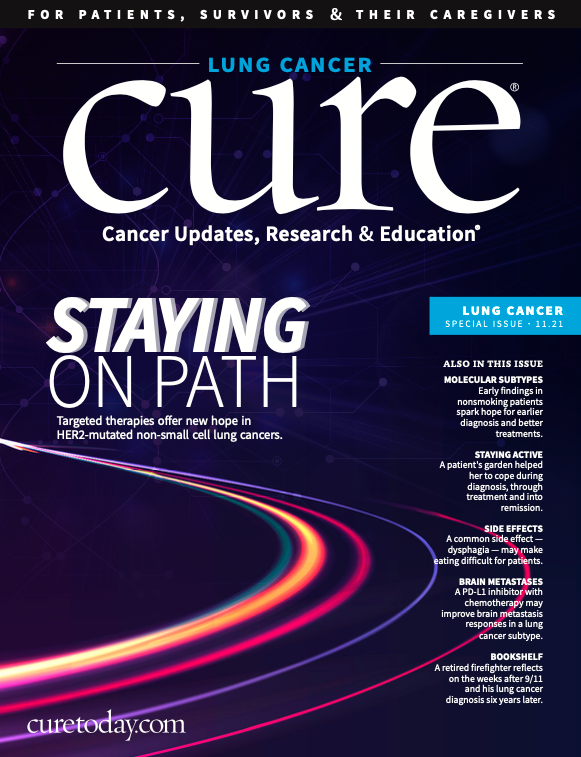Publication
Article
CURE
9/11 Firefighters and Unending Tragedy: 'Together as One Neighborhood'
Author(s):
Twenty years after 9/11, a retired firefighter reflects on the weeks following the attacks, as well as his own diagnosis of lung cancer six years later, in a newly published book.
Jerry Sanford retired to Naples, Florida, after a 29-year career as a New York City firefighter, but the city managed to call him back to help his brothers right before one of the most critical times in the history of the United States: 9/11. Although Sanford later developed cancer potentially associated with the fumes and toxins surrounding Ground Zero, he felt it was important to recount his experiences from the weeks leading up to and following 9/11 in his book, “It Started With a Helmet: A Retired Firefighter’s Return to New York City the Day Before 9/11.”
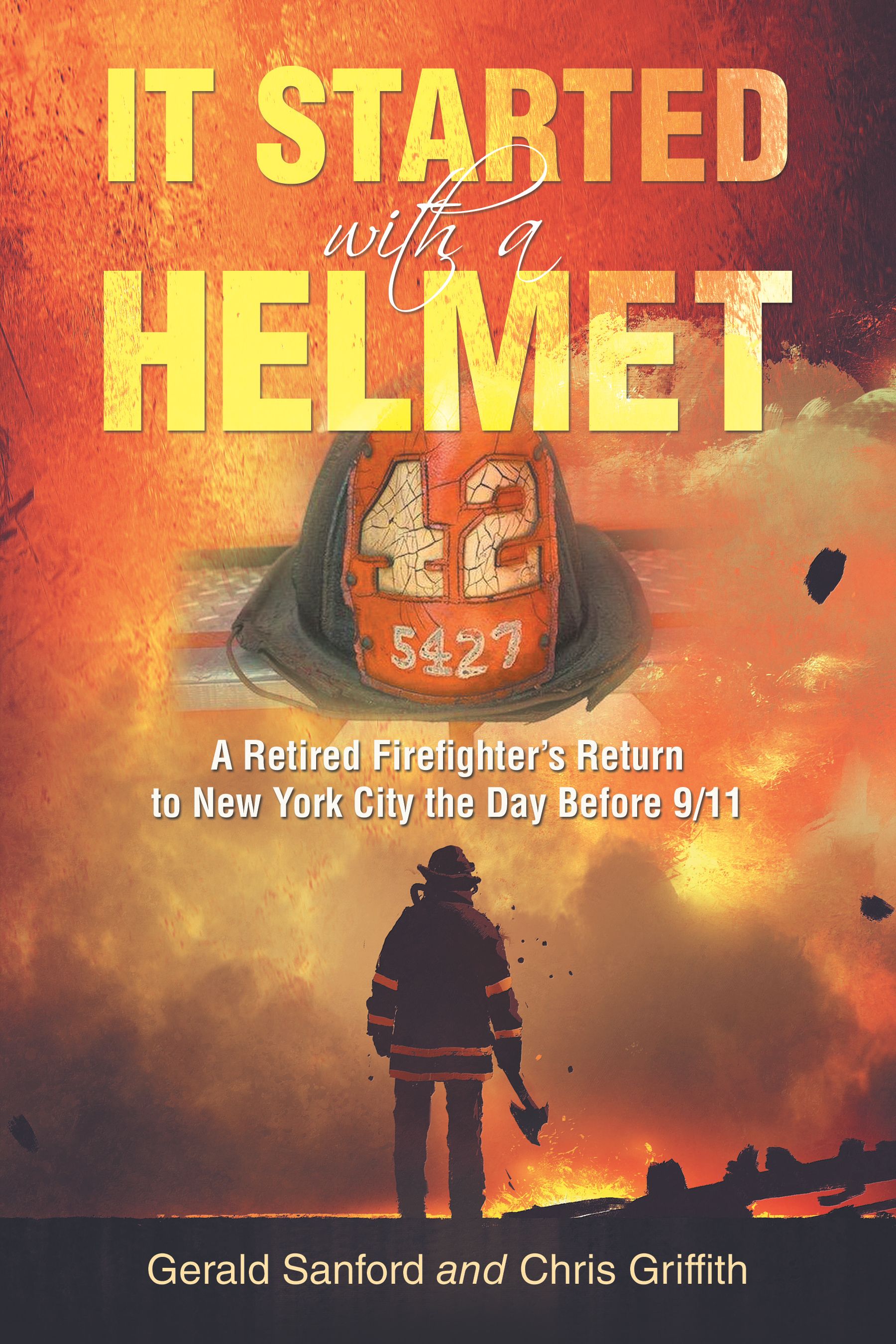
Within the pages of the book, which was published soon before the 20th anniversary of the attacks, readers will also find stories about Sanford’s time as a New York City police officer before starting with the city’s fire department, as well as his own diagnosis of adenocarcinoma, a type of lung cancer found in the glandular cells in the organ’s tissues, which likely developed from his exposure to the toxic air.
“It’s an appropriate title because it all started in Naples, Florida. How did a helmet from New York City get from the Bronx to Naples, and from Naples back to the Bronx? The book is all about that,” Sanford said in an interview with CURE®. “It’s a very slim novel, but it categorizes a little bit of my life when I was a police officer,
my story about 9/11 and then what happened, what (I did) after 9/11.”
NOT LEAVING ANYONE BEHIND
After what he describes as “driving his wife crazy” for five months, Sanford found himself at the North Naples Fire District station for an interview with the chief for a public information officer position.
Sanford shared a copy of his book with the firefighters of Ladder 131 in Red Hook, Brooklyn in August 2021.
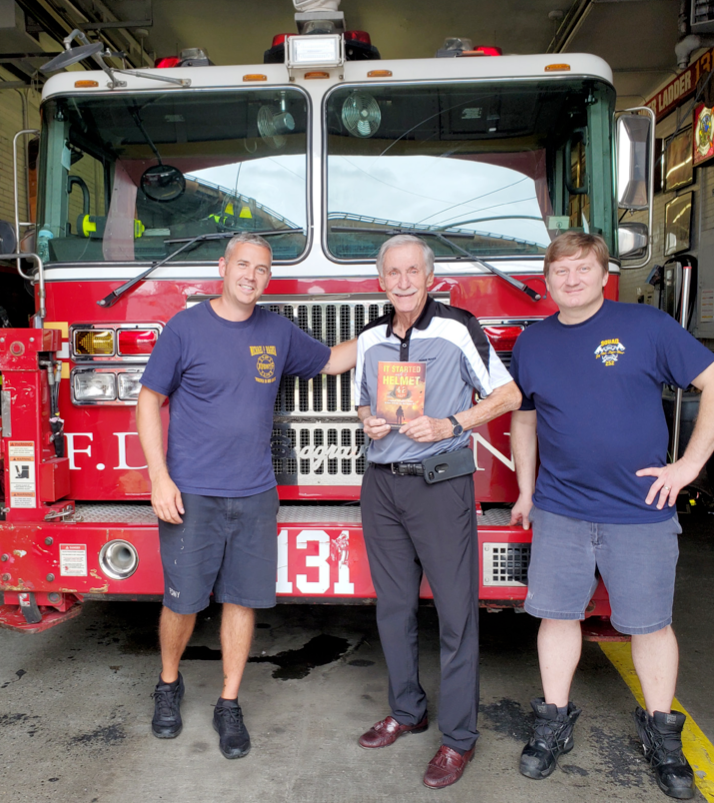
About a month into the job, Sanford was presented with an old New York City firefighter helmet that had been dropped off at the station in Florida. “(The chief) said to me, ‘We have an old New York City fire helmet here that a man brought in. It was his father’s, and he didn’t want it anymore,’” Sanford explained. He called Ladder 42, the company the helmet came from. The station was undergoing a renovation, so it was decided that Sanford would return it when the work was done in 2001.
On September 11, 2001, Sanford was flying from New York City back home to Naples with his wife, Maria. A few days before, he had come to return the old helmet to Ladder 42, and participated in a rededication ceremony for it. But two hours before he flew out of LaGuardia Airport, the world changed. The two planes had crashed into the World Trade Center, releasing about 24,000 gallons of jet fuel, at least 100,000 tons of organic debris and 230,000 gallons of transformer, heating and diesel oils. It wasn’t until he was changing planes in Pittsburgh that he learned what was happening.
Jerry Sanford kept some of his credentials from working at the press office after 9/11. He also previously reunited with his first firehouse in Harlem.

“And at first, I didn’t comprehend. I thought it was a sightseeing plane or something. But then we got thrown off the plane and it was pandemonium in the airport. We then quickly tried to get a car and get out of Pittsburgh. And then we found out by listening to the radio that, in fact, the second plane had hit the second tower, (then) Shanksville and the Pentagon. So it (was) a very heavy day,” Sanford remembered.
Two weeks later, Sanford returned to Brooklyn to help. “And the job was just torn apart. We had lost so many men from so many different ranks,” he said.
Jerry Sanford reunited at the Prospect Avenue firehouse in the Bronx, which is home of Ladder 42/Engine 73, where the helmet is displayed.
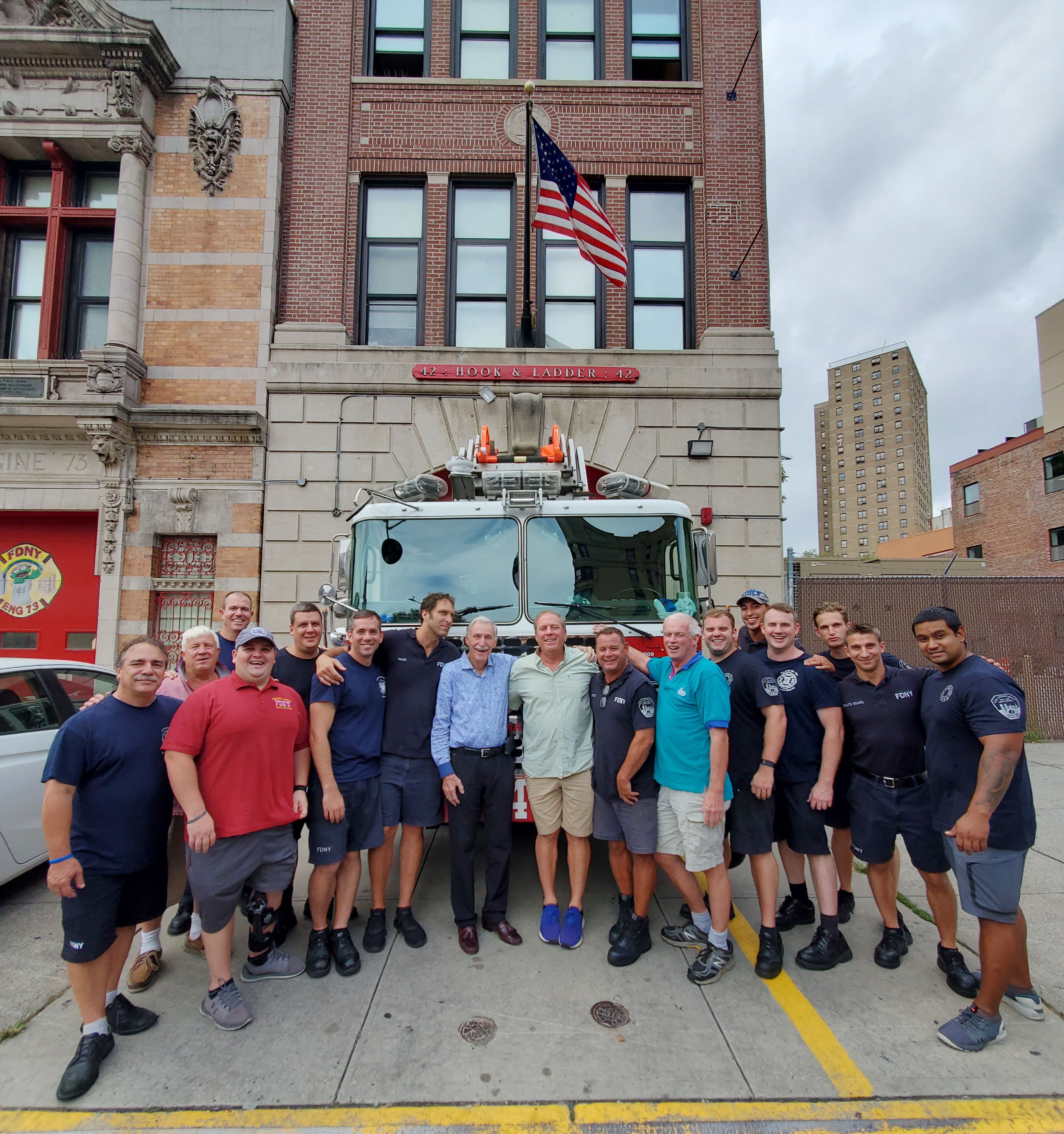
Sanford was assigned to the press office, where he would handle the media and attend funerals of those rescue workers who had died in the chaos. He recalled: “I could go into the firehouse and cry and grieve, which I did with my brother firefighters, but the media ... you had to kind of keep them at bay because they were from all over the world. This was a worldwide story. It wasn’t just a New York City story.”
Sanford said he knew about half of the rescue workers who lost their lives that day.
“I thought, wait a minute, this can’t be New York City, this can’t be where I served for 30 years,” Sanford recalled. “And it was just a horrible experience seeing that, but you know what, you have to do it, you got to pull up your pants, you got to get out there and you have to do it. Because you know what? They would have done it for me. And that’s why I was there. Because the brothers, we don’t leave anybody behind. We get in there and as the thousands of people are exiting the World Trade Towers — we’re going in. I’m very proud of the role, my small role. Everybody played a role that day. Everybody has a story. But I’m very proud that I was able to come back to New York and help.”
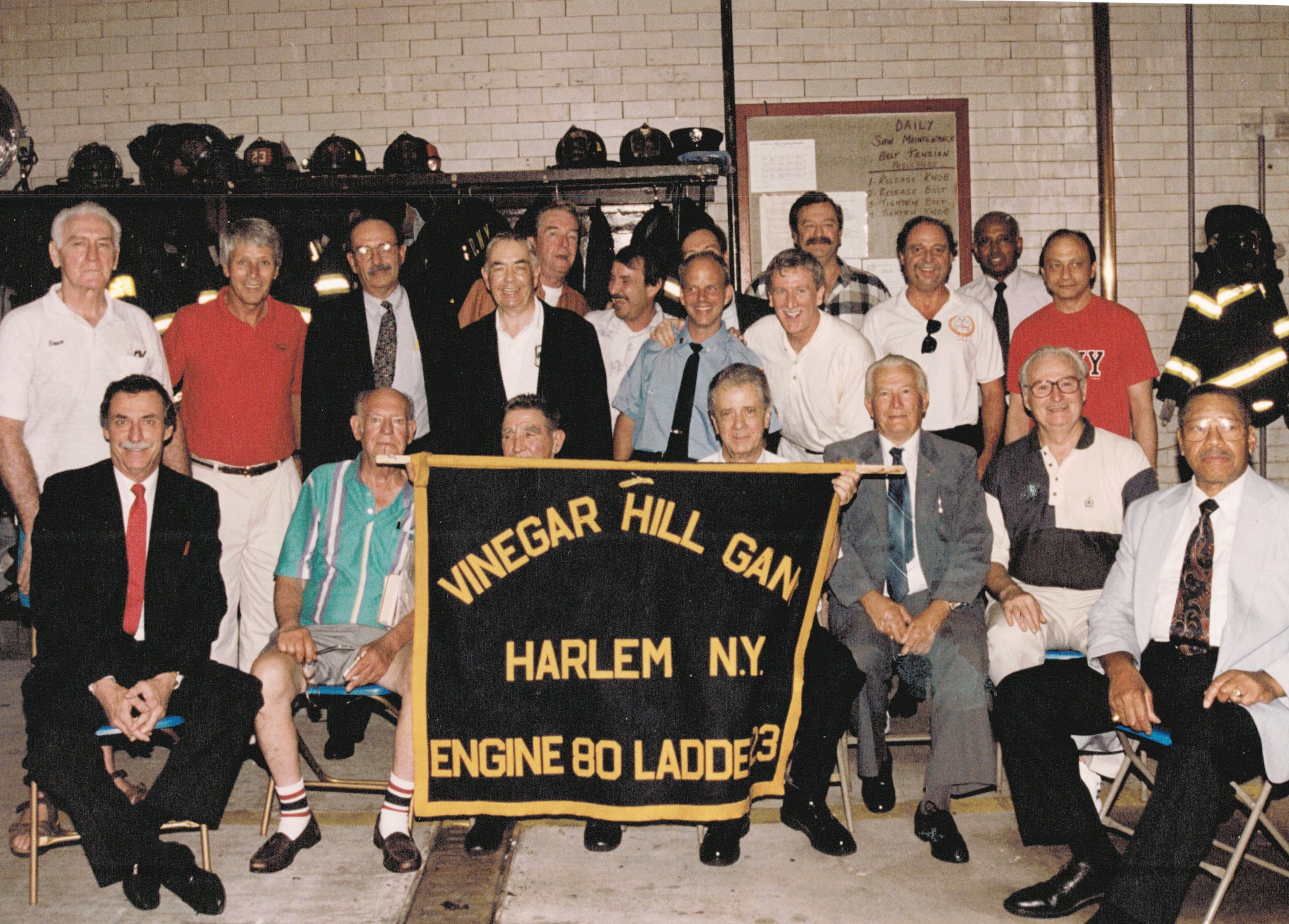
THE AFTERMATH
After the towers fell, a giant, toxic cloud loomed over Ground Zero. For hours, days and weeks after, rescue workers — including Sanford — inhaled the fumes. Twenty years later, the impact of those fumes is still being felt. According to Cancer Treatment Centers of America, an estimated 2,000 responders and Ground Zero workers have died from diseases including prostate cancer, leukemia, thyroid cancer and lung cancer, possibly attributed to the fumes they inhaled on the site.
In addition, rescue workers who helped during the aftermath of 9/11 may have a 9% increased risk of receiving a cancer diagnosis.
In December 2007, Sanford was diagnosed with adenocarcinoma in his upper right lung. His oncologist at the H. Lee Moffitt Cancer Center & Research Institute in Tampa, Florida, recommended a surgical approach. A recurrence in February 2008 of the same cancer in the lower left lung led to another successful surgery. “I went every year after that to my oncologist, and I had my CAT scan every year and everything was fine,” he explained.
But in 2012, the cancer returned. This time, his oncologist recommended extensive chemotherapy and radiation. “But God is good. I never got sick,” Sanford said.
Sanford has been cancer free since that year.
Twenty years ago, “we all came together as one neighborhood. Everybody was a New Yorker 20 years ago, helping everybody,” Sanford said. “But on the sad side, we keep losing firefighters and police officers every day from something that happened 20 years ago — from that cloud, that terrible cloud that we ingested, including myself. It took six years for (doctors) to detect it in me.”
Listen to Jerry Sanford's full podcast episode here.
For more news on cancer updates, research and education, don’t forget to subscribe to CURE®’s newsletters here.
